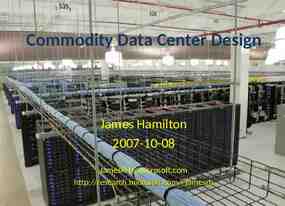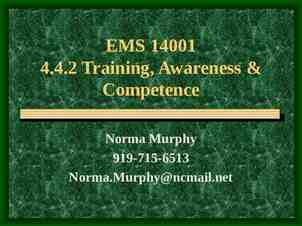National Voices and Macc Using Systems Leadership to Shape Change
20 Slides4.84 MB

National Voices and Macc Using Systems Leadership to Shape Change Introductory Masterclass Manchester, 24th January 2017 Debbie Sorkin National Director of Systems Leadership, The Leadership Centre [email protected] @DebbieSorkin2

Why Systems Leadership matters: because a) you’re not always in charge; b) ‘no plan survives contact with the enemy’; c) it’s complex

And you’re increasingly likely to come across it if you’re trying to deal/ work with public services “The complexity of the system within which public health operates, and the move towards place-based working, supports the continuing and growing need for a skillset that means that public health professionals can work across organisations.” Strengthening systems thinking and leadership is one of five key and interlocking themes in ‘Fit for the Future: A review of the public health workforce’, PHE May 2016 “Local system leadership is required to ensure that the totality of public resources are brought together to address shared priorities for health improvement.” LGA Health and Wellbeing Boards Diagnostic Tool 2016/17 “System leadership is needed it involves developing a shared vision learning and adapting and having an open and iterative process that harnesses the energies of clinicians, patients, carers, citizens independent and voluntary sectors, and local government ” NHS Planning Guidance to 2020/21, December 2015

Overall purpose of the Masterclass: for you to learn about, and be able to use, Systems Leadership approaches in your system – including spotting what might be really going on o Session 1: Complexity and wicked issues: background to Systems Leadership: what it is, how it works, when to use it o Session 2: How to deal with wicked issues: learning from research and projects around the country; practical lessons in systems behaviours, what works and what doesn’t o Session 3: Getting started and trying it out: an exercise in framing and reframing o At each stage, there’ll be an opportunity to reflect and discuss what this means for you, and about how you might make some real progress, even if (especially if?) you’re not feeling like a medal-winner at the moment

Using Systems Leadership to Shape Change Introductory Masterclass Session 1 Leading in Complexity: Living Systems and Wicked Issues

Context: the issues that people are wrestling with in public services are increasingly complex Struggle to match growing demand with smaller resource pot: NHS financial gap is growing and impact is increasingly visible (A&E, de facto rationing in many places for elective care, staff shortages, departmental closures, reconfiguration). Mirrored in other public services (e.g. local govt facing c 10bn in unfunded costs by 2019-20, cuts falling heavily on social care and VCS) Implications around unmet need and statutory responsibilities Emphasis on integration, but seen in terms of structures Additional fluidity brought about by plans for devolution Broadening range of stakeholders and audiences – more routes to navigate and relationships to build (and re-build when people leave) Difficulties in demonstrating public value and having it acknowledged by the public, at the same time as changes in public expectations – personalisation, co-production, independent living – all coinciding with worry about deterioration in future services

Systems leadership is seen across public services as a way of working with complexity “Leaders are struggling to innovate, integrate, manage demand and find new solutions.” “Leaders are wrestling with ‘wicked issues’ that shape-shift and defy resolution, and which cannot be resolved by single agencies acting alone.” “We are applying systems thinking to the practical reality of trying to achieve complex change.” Sue Goss, ‘A View from the Bridge’, OPM May 2015

Systems Leadership can do this because of how it’s defined: taking complexity as a given; cross-sector, partial and working with shared endeavour, relationships and TRUST “Systems Leadership: the collaborative leadership of a network of people in different places and at different levels in the system, creating a shared endeavour and co-operating to make a significant change.” About leading: when you’re not in charge when you need to ask when it’s complex when you have no money About shared ambition/relationships: participative/partial/emergent “Systems move at the speed of trust”

Starting point: thinking about what a System is (and isn’t)

A system is much more kinetic and open-ended – which is why it gives you room for manoeuvre A system: a set of individuals, organisations or bodies working together or interacting in some way as part of an interconnecting network; a complex whole

You can think of a system as a living thing: Myron Rogers’ “ Working with Living Systems” Structure Systems Policy Identity Meaning Information Relationships Action Trust

Some living things are nice .

But not all

And some systems really are out to get you: Systems are not necessarily neutral Maturana & Varela – evolutionary biology Organisms, from single cells to eco-systems have a variety of characteristics in common They have evolved to be in a perfect relationship with their environment It is a symbiotic relationship, the organism/organisation defines the environment and the environment defines the organism Organisms are self-referencing, they act to preserve their own identity (autopoeisis) If there is an external source of perturbation the organism acts to kill it, be it internal or external. If the organism is held perturbed for sufficient time it adapts to this new condition.

You make Systems Leadership practical by emphasising leadership at all levels, and by grounding it in behaviours Not just about authority at the top of organisations It’s a practical understanding – and awareness – about how you do what you do, and the impact on others So it’s about behaviours, and taking responsibility for them And it’s everyone’s business – people working at all levels in all sectors It therefore enables you to lead across organisational boundaries You can use frameworks to drive culture

Tools to help you describe leadership: levers to pull – frameworks that put leadership behaviours into practical form. Pilfer these relentlessly

You don’t need to be a systems leader all the time: Keith Grint: critical, tame and wicked issues Different kinds of issues require different kinds of change and different kinds of approach: Critical issues: Commander Tame issues: Management Wicked issues: Leadership

Keith Grint: Critical issues: Commander Portrayed as self-evident crisis; often at tactical level General uncertainty: though not ostensibly by commander who provides ‘answer’ No time for discussion or dissent Legitimises coercion as necessary in the circumstances for the public good Associated with command and encouraged through reward Commander’s role is to take required decisive action, i.e. provide answer to problem

Keith Grint: Tame issues: Management Issues as puzzles – there is a solution Can be complicated but there is a unilinear solution to them These are issues that management can (and has previously) solved There are established methods which are known to work Heart transplants, relocation and launching a new product are all tame issues Management’s role is to engage the appropriate process to solve the issue: technical leadership

Keith Grint: Wicked issues: Leadership New, recalcitrant or intransigent – you don’t know what to do, you put up with poor systems because you’re used to them or the issues have been around for ever and seem impossible to fix Complex – issues can’t be solved in isolation Sit outside single hierarchy and across systems No stopping rule and therefore no definition of success No right or wrong solutions; rather you aim for progress and better developments Uncertainty and ambiguity inevitable Leadership role is to ask the appropriate question and engage collaboration: adaptive leadership






